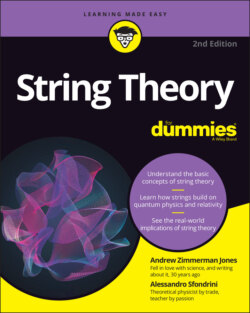Читать книгу String Theory For Dummies - Andrew Zimmerman Jones - Страница 104
Light as a wave: The ether theory
ОглавлениеNewton had treated light as particles, but experiments in the 19th century began to show that light acts like a wave. The major problem with this was that waves require a medium. Something has to do the waving. Light seemed to travel through empty space, which contained no substance at all. What was the medium that light used to move through space? What was waving?
To explain the problem, physicists proposed that space is filled with a substance. When looking for a name for this hypothetical substance, they turned back to Aristotle and named it luminous aether, or ether. (No relation to the gas used in old-timey surgeries as anesthetic.)
Even with this hypothetical ether, though, there were problems. Newton’s optics still worked, and his theory described light in terms of tiny balls moving in straight lines, not as waves. It seemed that sometimes light acts like a wave and sometimes it acts as a particle.
Most physicists of the 19th century believed in the wave theory, largely because the study of electricity and magnetism helped support the idea that light is a wave, but they were unable to find solid evidence of the ether.
